- Home
- Gore Vidal
The City and the Pillar
The City and the Pillar Read online
International acclaim for GORE VIDAL’s
THE CITY AND THE PILLAR
“Look back in admiration at The City and the Pillar and then read it. You will find compelling, historic American literature.”
—Catharine R. Stimpson, New York University
“An artistic achievement…. Vidal writes with lean strength and effective restraint.”
—The Washington Post
“The first serious American homosexual novel.”
—The Times (London)
“For American readers, the sexual revolution began on January 9, 1948, to be precise, when this modestly presented realistic novel about ferocious desires was first published. Before that date, sex in America was as it always was—hot, mad, slow, beautiful, dull, sly, damp, loathsome, amazing, delicious, demanding, destructive, astonishing, a dream, a dance, a song, a game—but when this book appeared, hyperbolic Henry Miller had to move over and make space on his cot for Gore Vidal, and sex was never the same again, at least not on the printed page.”
—Alan Cheuse
“This new edition of The City and the Pillar promises to supply the occasion to recognize the key role Gore Vidal’s extraordinary novel has played in redefining what counts as the sexually normative.”
—Donald E. Pease, Dartmouth College
“Frank, shocking…extremely sympathetic, penetrating and exhortive…. Few readers will put this book down unmoved or untaught.”
—New York Herald Tribune
“The City and the Pillar had the courage to subject American masculinity, in all its parochialism, to the kind of scrutiny that only one who dared to be himself, like Gore Vidal, could achieve. This is a novel about original sin, American style.”
—Bernard F. Dick, author of The Apostate Angel: A Critical Study of Gore Vidal
“A serious work of literature. The theme is most sensitively handled, the writing, always sober and responsible, quickens often to a lyrical tone, and the detail is closely observed…. Impressive.”
—The Spectator
“Remarkable…. A compelling story written in elegantly spare prose…. Wonderfully mythic.”
—Jay Parini in Gore Vidal: Writer Against the Grain
“A remarkable and characteristically courageous achievement. At once a penetrating study of self-deception and an unsentimental analysis of gay life in the 1940s, it traces convincingly a young man’s awakening while also locating this experience in the vast expanses and repetitive patterns of myth.”
—Claude J. Summers, author of Gay Fiction: Wilde to Stonewall—Studies in a Male Homosexual Literary Tradition
“A brilliant exposé of subterranean life.”
—The Atlantic Monthly
GORE VIDAL
THE CITY AND THE PILLAR
Gore Vidal was born in 1925 at the United States Military Academy at West Point. His first novel, Williwaw, written when he was nineteen years old and serving in the Army, appeared in the spring of 1946. He subsequently wrote twenty-three novels, five plays, many screenplays, short stories, well over two hundred essays, and two memoirs. He died in 2012.
BOOKS BY GORE VIDAL
NOVELS
Williwaw
In a Yellow Wood
The City and the Pillar
The Season of Comfort
A Search for the King
Dark Green, Bright Red
The Judgment of Paris
Messiah
Julian
Washington, D.C.
Myra Breckinridge
Two Sisters
Burr
Myron
1876
Kalki
Creation
Duluth
Lincoln
Empire
Hollywood
Live from Golgotha
The Smithsonian Institution
The Golden Age
NONFICTION
Inventing a Nation
SHORT STORIES
A Thirsty Evil
Clouds and Eclipses
PLAYS
An Evening with Richard Nixon
Weekend
Romulus
On the March to the Sea
The Best Man
Visit to a Small Planet
ESSAYS
Rocking the Boat
Reflections Upon a Sinking Ship
Homage to Daniel Shays
Matters of Fact and of Fiction
The Second American Revolution
At Home
Screening History
United States
The Last Empire
Perpetual War for Perpetual Peace
Imperial America
The Selected Essays of Gore Vidal
MEMOIRS
Palimpsest
Point to Point Navigation
FIRST VINTAGE INTERNATIONAL EDITION, DECEMBER 2003
Copyright © 1948, 1965 by E. P. Dutton & Co., Inc.
Introduction copyright © 1995 by Literary Creation Enterprises, Inc.
All rights reserved under International and Pan-American Copyright Conventions. Published in the United States by Vintage Books, a division of Random House, Inc., New York, and simultaneously in Canada by Random House of Canada Limited, Toronto. Originally published in hardcover in the United States by E. P. Dutton & Co., Inc., New York, in 1948. A revised edition, entitled The City and the Pillar Revised, was published by E. P. Dutton & Co., Inc., New York, in 1965. The introduction was originally published in slightly different form as the preface to the Random House Edition of this work.
Vintage is a registered trademark and Vintage International and colophon are trademarks of Random House, Inc.
The Cataloging-in-Publication data is on file at the Library of Congress.
Vintage ISBN 9781400030378
Ebook ISBN 9780525565840
www.vintagebooks.com
v5.3.1
a
For the memory of J.T.
Contents
Cover
About the Author
Books By Gore Vidal
Title Page
Copyright
Dedication
Epigraph
Introduction
Chapter 1
Chapter 2
Chapter 3
Chapter 4
Chapter 5
Chapter 6
Chapter 7
Chapter 8
Chapter 9
Chapter 10
Chapter 11
But his wife looked back from behind him and she became a pillar of salt.
GENESIS 19:26
INTRODUCTION
Much has been made—not least by the Saint himself—of how Augustine stole and ate some pears from a Milanese orchard. Presumably, he never again trafficked in, much less ate, stolen goods, and once this youthful crime (“a rum business,” snarled the unsympathetic American jurist Oliver Wendell Holmes, Jr.) was behind him, he was sainthood bound. The fact is that all of us have stolen pears; the mystery is why so few of us rate halos. I suspect that in certain notorious lives there is sometimes an abrupt moment of choice. Shall I marry or burn? Steal or give to others? Shut the door on a life longed for while opening another, deliberately, onto trouble and pain because…The “because” is the true story seldom told.
My father once told me, after reviewing his unpleasant period in public office, that whenever it came tim
e for him to make a crucial decision, he invariably made the wrong one. I told him that he must turn to Churchill and write his own life, demonstrating what famous victories he had set in motion at Gallipoli or in the “dragon’s underbelly” of the Third Reich. But my father was neither a writer nor a politician; he was also brought up to tell the truth. I, on the other hand, was brought up by a politician grandfather in Washington, D.C., and I wanted very much to be a politician, too. Unfortunately, nature had designed me to be a writer. I had no choice in the matter. Pears were to be my diet, stolen or homegrown. There was never a time when I did not make sentences in order to make those things that I had experienced cohere and become “real.”
Finally, the novelist must always tell the truth as he understands it while the politician must never give the game away. Those who have done both comprise a very short list indeed. The fact that I was never even a candidate for the list had to do with a choice made at twenty that entirely changed my life.
At nineteen, just out of the army, I wrote a novel, Williwaw (1946): it was admired as, chronologically, at least, the first of the war novels. The next year I wrote the less admired In a Yellow Wood (1947). Simultaneously, my grandfather was arranging a political career for me in New Mexico (the governor was a protégé of the old man). Yes, believe it or not, in the greatest democracy the world has ever known—freedom’s as well as bravery’s home—elections can be quietly arranged, as Joe Kennedy liked to explain to you.
For someone twenty years old I was well situated in the world, thanks to two published novels and my grandfather’s political skills. I was also situated dead center at a crossroads rather like the one Oedipus found himself at. I was at work on The City and the Pillar. If I published it, I’d take a right turn and end up accursed in Thebes. Abandon it and I’d turn left and end up in holy Delphi. Honor required that I take the road to Thebes. I have read that I was too stupid at the time to know what I was doing, but in such matters I have always had a certain alertness. I knew that my description of the love affair between two “normal” all-American boys of the sort that I had spent three years with in the wartime army would challenge every superstition about sex in my native land—which has always been more Boeotia, I fear, than Athens or haunted Thebes. Until then, American novels of “inversion” dealt with transvestites or with lonely bookish boys who married unhappily and pined for Marines. I broke that mold. My two lovers in this novel were athletes and so drawn to the entirely masculine that, in the case of one, Jim Willard, the feminine was simply irrelevant to his passion to unite with his other half, Bob Ford: unfortunately for Jim, Bob had other sexual plans, involving women and marriage.
I gave the manuscript to my New York publishers, E. P. Dutton. They hated it. One ancient editor said, “You will never be forgiven for this book. Twenty years from now you will still be attacked for it.” I responded with an uneasy whistle in the dark: “If any book of mine is remembered in the year 1968, that’s real fame, isn’t it?”
To my grandfather’s sorrow, on January 10, 1948, The City and the Pillar was published. Shock was the most pleasant emotion aroused in the press. How could our young war novelist…? In a week or two, the book was a bestseller in the United States and wherever else it could be published—not exactly a full atlas in those days. The English publisher, John Lehmann, was very nervous. In his memoirs, The Whispering Gallery, he writes, “There were several passages in The City and the Pillar, a sad, almost tragic book and a remarkable achievement in a difficult territory for so young a man, that seemed to my travellers and the printers to go too far in frankness. I had a friendly battle with Gore to tone down and cut these passages. Irony of the time and taste: they wouldn’t cause an eyebrow to be lifted in the climate of the early sixties.” But only twenty years ago the book was taken from Dennis Altman as he arrived at the airport in Sydney, Australia. Altman challenged the obscenity law under which the book had been seized. The judge in the case acknowledged that under the law that he must administer the book was obscene, but then, in a famous obiter dicta, he wrote that he thought the law absurd: in due course, it was changed. Meanwhile, even today, copies of the book still fitfully blaze on the pampas and playas of Argentina and other godly countries.
What did my confreres think? I’m afraid not much. The fag writers were terrified; the others were delighted that a competitor had so neatly erased himself. I did send copies to two famous writers, fishing, as all young writers do, for endorsements. The first was to Thomas Mann. The second was to Christopher Isherwood, who responded enthusiastically. We became lifelong friends. Through Joseph Breitbach I was told that André Gide was planning to write an “appreciation,” but when we finally met he spoke only of a handwritten, fetchingly illustrated pornography that he had received from an English clergyman in Hampshire.
At fourteen I had read Thomas Mann’s Joseph books and realized that the “novel of ideas” (we still have no proper phrase for this sort of book or, indeed, such a genre) could work if one were to set a narrative within history. Later, I was struck by the use of dialogue in The Magic Mountain, particularly the debates between Settembrini and Naphta, as each man subtly vies for the favors of the dim but sexually attractive Hans Castorp. Later, there would be complaints that Jim Willard in The City and the Pillar was also dim. But I deliberately made Jim Willard a Hans Castorp type: what else could someone so young be, set loose in the world—the City—that was itself the center of interest? But I did give Jim something Hans lacked: a romantic passion for Bob Ford that finally excluded everything else from his life, even, in a sense, the life itself. I got a polite, perfunctory note from Thomas Mann, thanking me for my “noble work”: my name was misspelled.
Contemplating the American scene in the 1940s, Stephen Spender deplored the machinery of literary success, remarking sternly that “one has only to follow the whizzing comets of Mr. Truman Capote and Mr. Gore Vidal to see how quickly and effectively this transforming, diluting, disintegrating machinery can work.” He then characterized The City and the Pillar as a work of sexual confession, quite plainly autobiography at its most artless. Transformed, diluted, disintegrated as I was, I found this description flattering. Mr. Spender had paid me a considerable compliment; although I am the least autobiographical of novelists, I had drawn the character of the athlete Jim Willard so convincingly that to this day aging pederasts are firmly convinced that I was once a male prostitute, with an excellent backhand at tennis. The truth, alas, is quite another matter. The book was a considerable act of imagination. Jim Willard and I shared the same geography, but little else. Also, in the interest of verisimilitude I decided to tell the story in a flat gray prose reminiscent of one of James T. Farrell’s social documents. There was nothing fancy in the writing. I wanted the prose plain and hard.
In April 1993, at the State University of New York at Albany, a dozen papers were read by academics on The City and the Pillar. The book has been in print for half a century, something I would not have thought possible in 1948, when The New York Times would not advertise it and no major American newspaper or magazine would review it or any other book of mine for the next six years. Life magazine thought that the greatest nation in the country, as Spiro Agnew used to say, had been driven queer by the young army first mate they had featured only the previous year, standing before his ship. I’ve not read any of the Albany papers. For one thing, it is never a good idea to read about oneself, particularly about a twenty-one-year-old self who had modeled himself, perhaps too closely, on Billy the Kid. I might be shot in the last frame, but I was going to take care of a whole lot of folks who needed taking care of before I was done.
There were those who found the original ending “melodramatic.” (Jim strangles Bob after an unsuccessful sexual encounter.) When I reminded one critic that it is the nature of a romantic tragedy to end in death, I was told that so sordid a story about fags could never be considered tragic, unlike, let us say, a poignant tale of doomed love between a p
air of mentally challenged teenage “heteros” in old Verona. I intended Jim Willard to demonstrate the romantic fallacy. From too much looking back, he was destroyed, an unsophisticated Humbert Humbert trying to re-create an idyll that never truly existed except in his own imagination. Despite the title, this was never plain in the narrative. And of course the coda was unsatisfactory. At the time it was generally believed that the publishers forced me to tack on a cautionary ending in much the same way the Motion Picture Code used to insist that wickedness be punished. This was not true. I had always meant the end of the book to be black, but not as black as it turned out. So for a new edition of the book published in 1965 I altered the last chapter considerably. In fact, I rewrote the entire book (my desire to imitate the style of Farrell was perhaps too successful), though I did not change the point of view or the essential relationships. I left Jim as he was. He had developed a life of his own outside my rough pages. Claude J. Summers noted that of the characters
only Jim Willard is affecting, and he commands sustained interest largely because he combines unexpected characteristics. Bland and ordinary, he nevertheless has an unusually well-developed inner life. Himself paralyzed by romantic illusions, he is surprisingly perceptive about the illusions of others. For all the novel’s treatment of him as a case history, he nevertheless preserves an essential mystery. As Robert Kiernan comments (Gore Vidal), Jim Willard is Everyman and yet he is l’étranger…* the net effect is paradoxical but appropriate for it decrees that, in the last analysis, we cannot patronize Jim Willard, sympathize with him entirely, or even claim to understand him. Much more so than the typical character in fiction, Jim Willard simply exists, not as the subject of a statement, not as the illustration of a thesis, but simply as himself.
Not long ago I received a telephone call from the biographer of Thomas Mann. Did I know, he asked, the profound effect that my book had had on Mann? I made some joke to the effect that at least toward the end of his life he may have learned how to spell my name. “But he didn’t read the book until 1950, and as he read it he commented on it in his diaries. They’ve just been published in Germany. Get them.” Now I have read, with some amazement, of the effect that Mann’s twenty-one-year-old admirer had on what was then a seventy-five-year-old world master, situated by war in California.

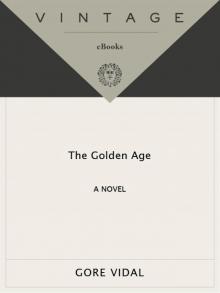 The Golden Age: A Novel
The Golden Age: A Novel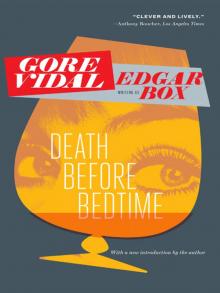 Death Before Bedtime
Death Before Bedtime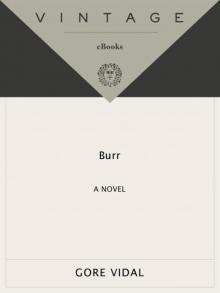 Burr
Burr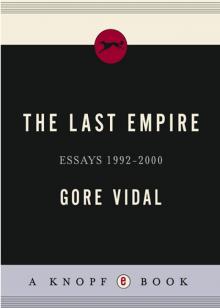 The Last Empire
The Last Empire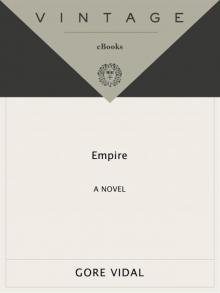 Empire: A Novel
Empire: A Novel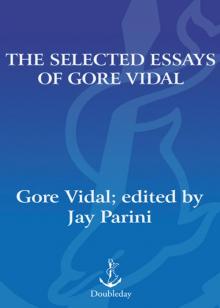 The Selected Essays of Gore Vidal
The Selected Essays of Gore Vidal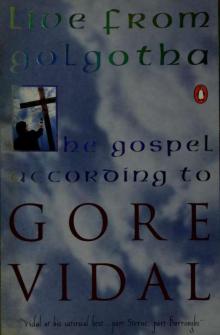 Live From Golgotha
Live From Golgotha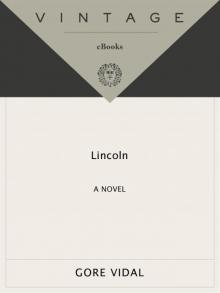 Lincoln
Lincoln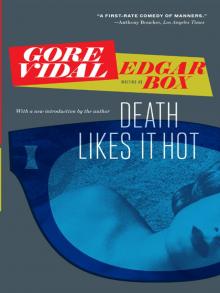 Death Likes It Hot
Death Likes It Hot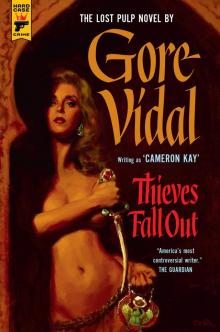 Thieves Fall Out (Hard Case Crime)
Thieves Fall Out (Hard Case Crime)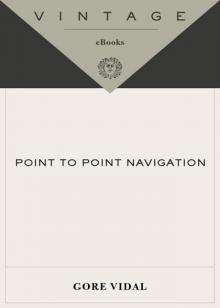 Point to Point Navigation
Point to Point Navigation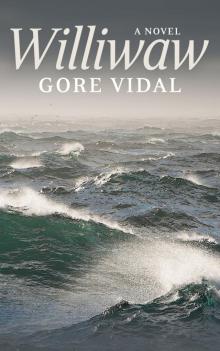 Williwaw
Williwaw Death in the Fifth Position
Death in the Fifth Position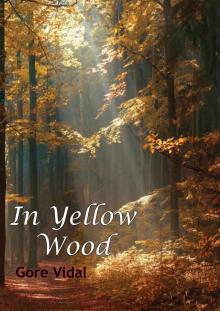 In a Yellow Wood
In a Yellow Wood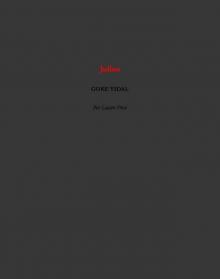 Julian
Julian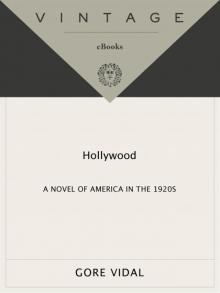 Hollywood
Hollywood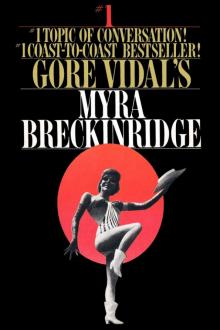 Myra Breckinridge
Myra Breckinridge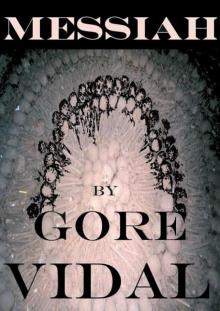 Messiah
Messiah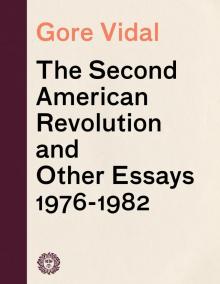 The Second American Revolution and Other Essays 1976--1982
The Second American Revolution and Other Essays 1976--1982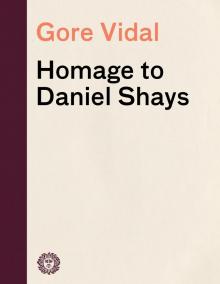 Homage to Daniel Shays
Homage to Daniel Shays Empire
Empire Thieves Fall Out
Thieves Fall Out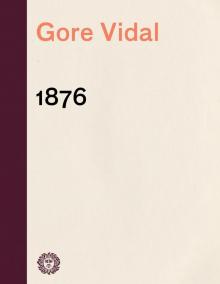 1876
1876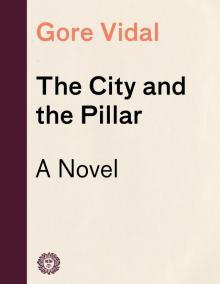 The City and the Pillar
The City and the Pillar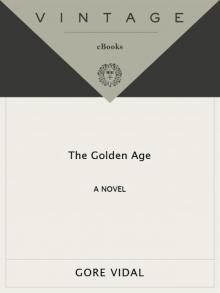 The Golden Age
The Golden Age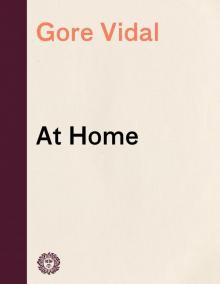 At Home
At Home